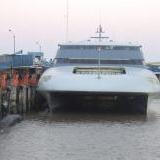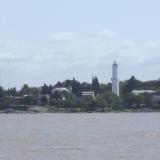acelga - swiss chard, for example in a tarta de acelga
achuras a la parrilla - internal organs, grilled. Study up on your Spanish terms for internal organs!
alfajores - cookies - corn-flower biscuits sandwich filled with dulce-de-leche, and coated in powdered sugar, or chocolate or meringue
al punto - medium - as in level to which to cook steak
asado - grilled
asado de tira - grilled short-ribs
bife de chorizo - strip steak, considered the most popular cut here
bife de costilla - ribs
bife de lomo - tenderloin, filet mignon
bondiola, bondiola de cerdo - pork shoulder. Bondiola sandwiches are quite popular, available at every street food stall, especially on the Costanera Sur and Norte
budin de pan - bread pudding
carne de ternera - veal
candilejas - small round empanadas, found them at a chain named Gourmet, their tag line: Empanadas Caseras, La empanada rellena. They had candilejas with muzzarella, chorizo colorado, y rodajas de ají en vinagre.
carne de ternera - veal
casero - home-made
chimichurri - sauce for grilling, and using as a condiment, available in multiple variations. Provenzal, agreen chimichurri tastes really good and contains parsley and garlic. Most places though seem to have a a mixture of dry oregano, olive oil, some garlic and red pepper flakes, and this reddish mixture does not taste that good though it may work well as a grilling paste. Pictures: Salas and Provenzal on a plate.
chinchulin - intestine
chivito - goat meat. but in neighboring Uruguay, this is a name for the steak sandwich, completo
chocolate amargo - bitter chocolate
chopp - draft beer

